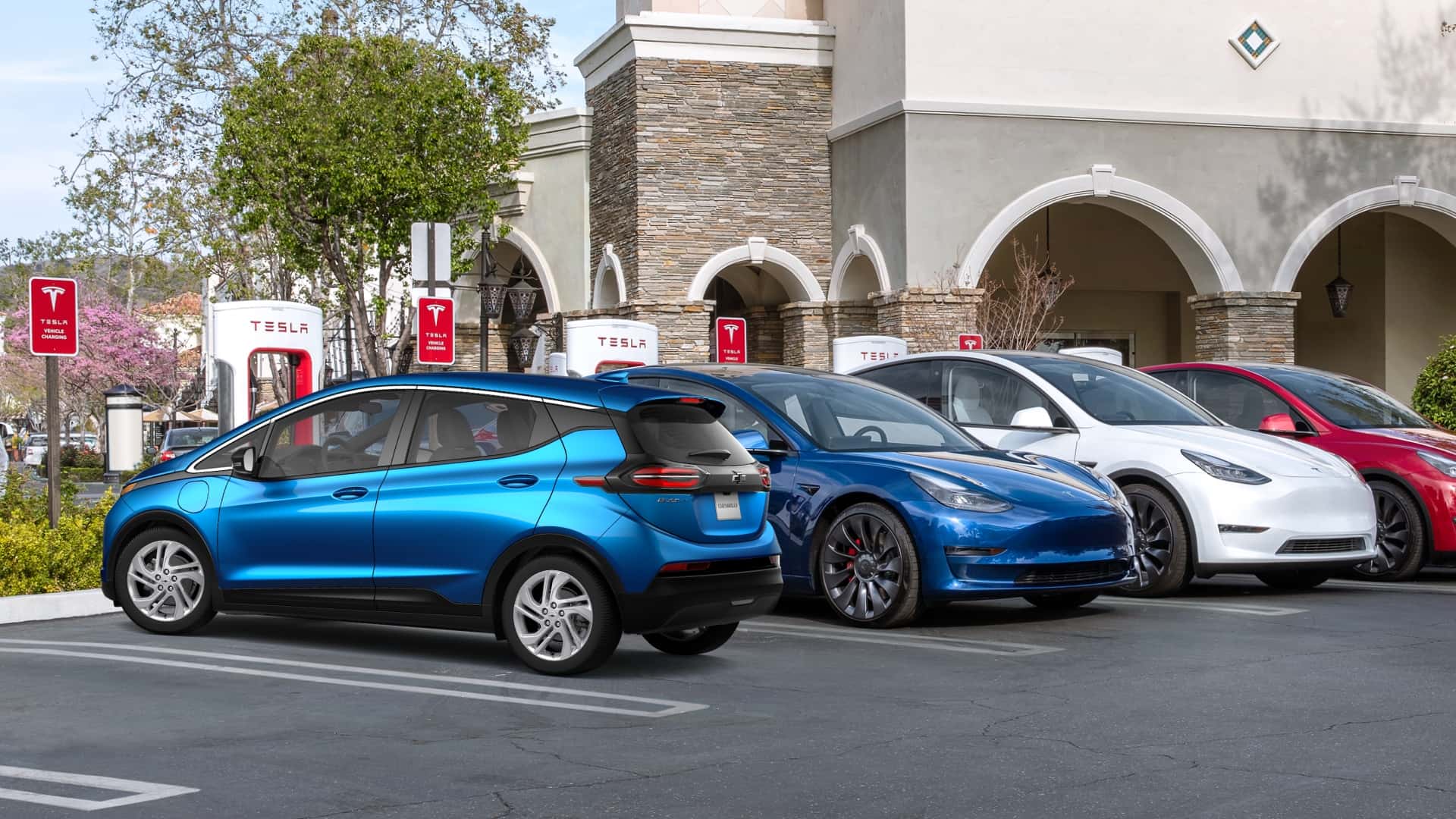
CHEVY BOLT OWNERS NEED DEALER SERVICE TO USE TESLA CHARGERS
While newer GM owners only need to order their adapters, Bolt owners have to make an extra stop.
Every GM EV now has access to 17,800 Tesla Superchargers for fast charging, with the lone exception being the 1990s EV1. That means the Chevy Bolt—with its modest 55-kW maximum charging rate—can now tap into Tesla’s network of 250-kW chargers. There’s just one hurdle you’ll have to overcome.
“Bolts will have access but will require an update at the dealer,” GM technology spokesperson Sanaz Marbley wrote to InsideEVs. “Those customers will get an email about it on launch day telling them more.”
GM's NACS Adapter
Marbley says dealers can start scheduling appointments immediately. Given that it may take a bit for your adapter to come—details on how to order here—the software update likely won’t be what slows you down. Still, it’s a hurdle Hummer, Lyriq, Silverado, Blazer, Equinox and Sierra EV owners won’t have to deal with.
It probably shouldn’t be too surprising to learn that there’s an extra step for the Bolt. The Bolt entered production in 2016, and as GM’s first long-range EV, it used an older electrical and software architecture that predates the company’s new Ultium platform. While Ultium vehicles have broad over-the-air (OTA) update capabilities, the Bolt has received few OTA patches, and it’s no surprise to learn that a more substantial software upgrade requires a dealer visit. After all, it’s not like GM planned for Supercharger compatibility when designing the Bolt during the Obama administration.
The Bolt was also designed with the charge door on the front left of the vehicle. That’s a common location for charging ports. Still, Tesla’s Supercharger network was infuriatingly built out with short cables and stalls designed purely for vehicles with their charge doors on the driver-side rear of the vehicle. That means Bolt owners will have to park in one stall and use the charging handle of the adjacent Supercharger. It’s inelegant, but don’t worry. Tesla has said that it’s ok for non-Tesla EVs to double park if it’s necessary to use the charger.
The combination of double parking and slow charging speeds will likely make the Bolt an unwelcome sight at a Supercharger. When we did a charging test in 2022, a Bolt EV took 73 minutes to charge from 10-80%. That’s about twice as long as it takes a Model 3 to do the same, and the Bolt will take twice as many stalls. We do not recommend charging from 0-100% in any EV, but that’s especially true in the Bolt. The last two times we tried it, it took over 2 hours.
More Charging News
- Chevrolet Equinox EV’s DC Fast Charging Quirks, Explained
- 2024 Kia EV9 Fast Charging Test: Now That's Quick
- Lucid Gravity SUV Will Get Tesla's NACS Charging Port
- Tesla May Finally Be Ramping Up Charging Adapter Production
But that doesn’t make fast-charging the Bolt useless. Chevy says that owners can get 100 miles of range in 30 minutes of charging, which means you can travel about two hours between half-hour stops. It’s not ideal—it’s 2016 tech—but people can and do road trip these things. The power of the charger is rarely an issue, so the availability of 250-kW Superchargers won’t change much in terms of stop time. With 17,800 more reliable stalls to access in addition to the existing network, it’ll be easier for Bolt owners to plan routes that involve shorter, more frequent stops.
Just make sure your first stop is the dealership. Dealers are accepting appointments starting today, and once you get the software update and the adapter, you should be good to go.
More Bolt Info
2024-09-18T12:46:48Z dg43tfdfdgfd